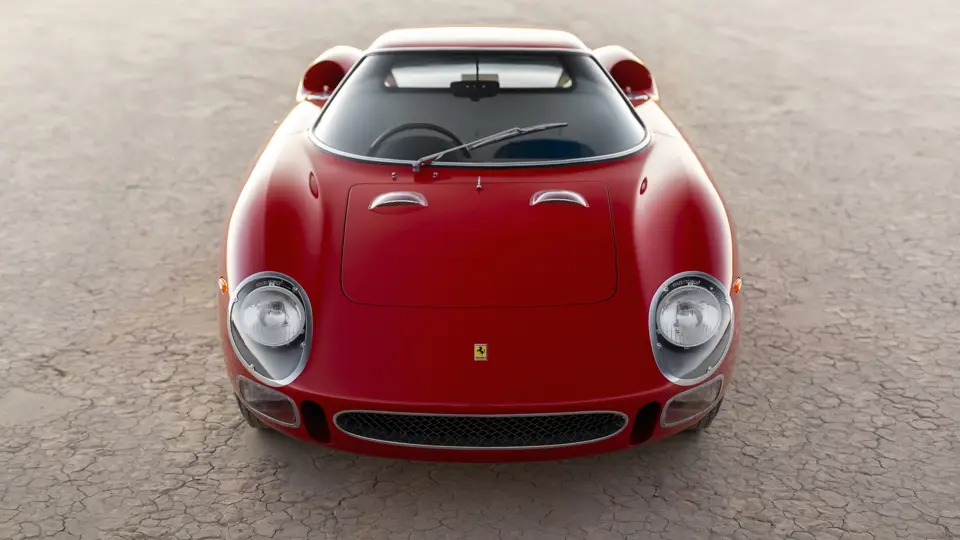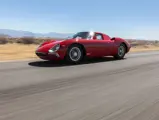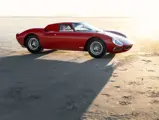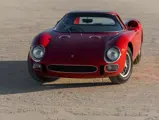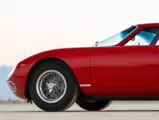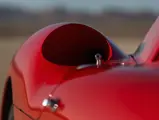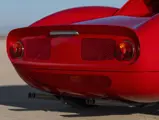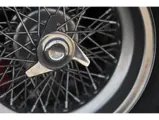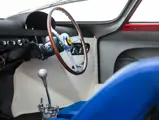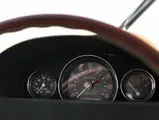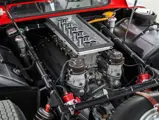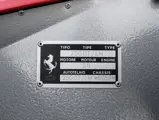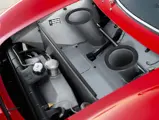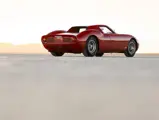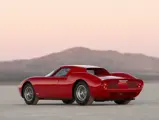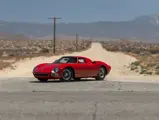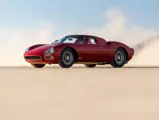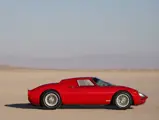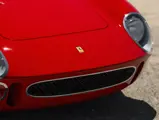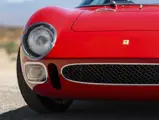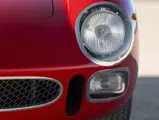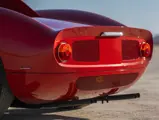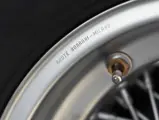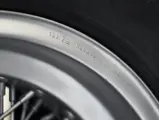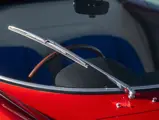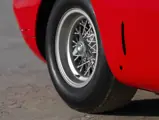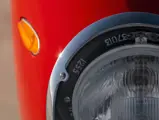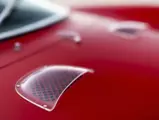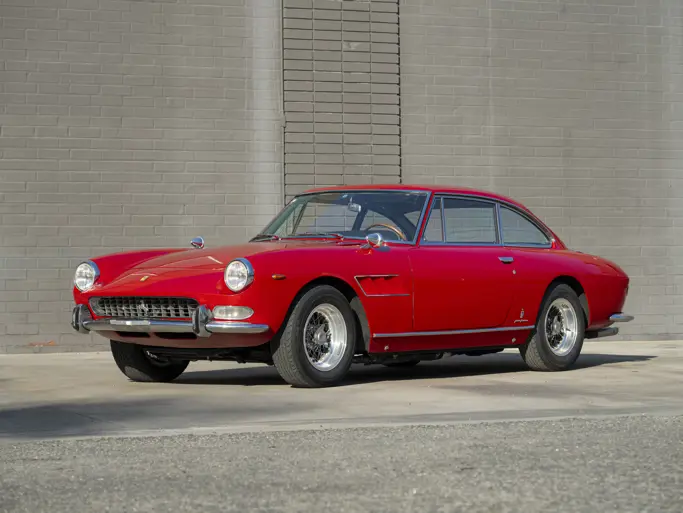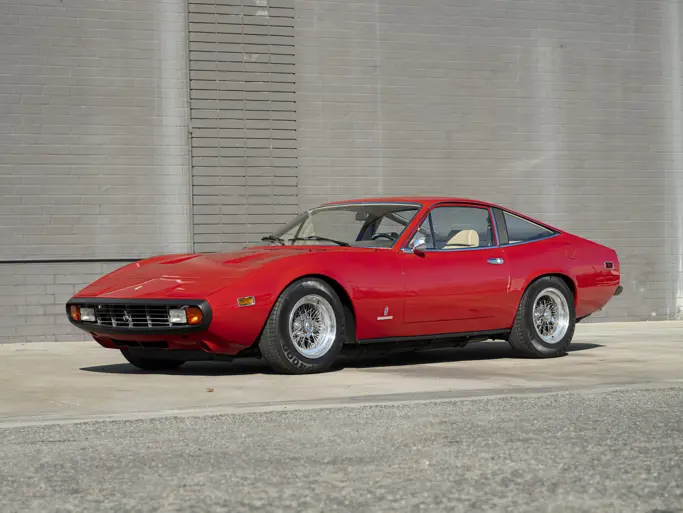
1964 Ferrari 250 LM by Scaglietti
{{lr.item.text}}
$18,000,000 - $20,000,000 USD | Not Sold
{{bidding.lot.reserveStatusFormatted}}
- Among the trilogy of the all-time greatest Ferrari models ever created; 250 GTO, 250 Testa Rossa, and the 250 LM
- The 22nd of only 32 examples ever built
- Raced at the 1968 24 Hours of Le Mans
- Four overall victories and one additional class win during the 1965 BRSCC Season
- Piloted in period by several notable racing drivers, including Mike Hailwood, Innes Ireland, and Michael Parkes
- Retains original engine and transaxle utilized at Le Mans in 1968, as certified with a Ferrari Classiche Red Book
- Comprehensive restoration to original specifications by Ferrari Classiche completed in 2021
- One of relatively few examples to have never suffered a significant crash
- Exhibited at the 2022 Pebble Beach Concours d’Elegance, the 2021 Ferrari Finals at Mugello, and the Enzo Ferrari Museum in Modena
- Very well-documented with factory build sheet copies, SEFAC papers, 1968 Le Mans paperwork, former owner’s correspondence, period photographs with detailed analysis, restoration summary authored by Ferrari, history report by Marcel Massini, and Ferrari Classiche Red Book
- An exquisitely presented and highly original example of Maranello’s legendary rear-engine V-12 racecar
DEVELOPMENT OF THE REAR-ENGINE 250 GT
It is arguable that amid the tide of mid/rear-placed engine architecture that has steadily advanced in sports car design since the late 1950s, one manufacturer looms larger than all others—Ferrari. Maranello’s embrace of this race-developed design stretches back to Dino Ferrari’s V-6 engine of the late 1950s, which was installed aft of the driver in the Scuderia’s Formula One cars in 1960 to great results.
Not long after, Ferrari began to engineer a sports car in this manner, resulting in the sensuous rear-engine 246 SP, the first in a small batch of Sports Prototype racecars with ever-increasing displacements. Despite the continued evolution of the Dino V-6, however, the SP racecars often failed to keep pace with their larger-engined competitors. This prompted Maranello’s engineers to consider a rear-placed V-12, and in early 1963 chassis number 0796, which began life as a 246 SP, was equipped with a 3-liter Colombo short-block engine tuned to Testa Rossa specifications. This was the prototype example of the legendary 250 P racecar, a model that went on to win the 24 Hours of Le Mans in 1963.
Given the success of the mid/rear placed V-12 in the prototype racer, it was only logical for Ferrari to transition the design to GT class competition. The 250 P was used as the basis for this new berlinetta, which would essentially add a roof to the prototype’s open coachwork. Sergio Scaglietti’s carrozzeria fashioned one of its most acclaimed masterpieces, commencing with the 250 P’s front end and fender treatments, but capping them with a low roof truncated at the rear with flying buttress edges, which then swept down through the racecar’s rear clamshell.
The new model was dubbed the 250 LM, for Le Mans, and was officially introduced at the 1963 Paris Salon with chassis number 5149. With such an exotic appearance and competition-tuned performance envelope, the LM was a clear forerunner of the wave of large-displacement rear-engine supercars that soon followed.
Considering that the 250 GT engine claimed 10 years of production in its favor, the LM appeared to qualify for FIA homologation by at least one definition, and Ferrari expected nothing less than class dominance to follow. Nevertheless, in an effort to bolster the model’s pretense as a regular roadgoing production car that belonged in GT class racing, Maranello made some trifling efforts to assuage critics, dutifully equipping the cars with horns and spare wheels, and even printing sales brochures.
But the FIA’s Commission Sportive Internationale (CSI) was not so easily convinced, particularly after Ferrari began installing a more advanced engine in the car, the 3.3-liter Colombo V-12 with dry-sump lubrication that eventually found a more permanent home in the forthcoming 275 GTB road car. The motor rather obviously gave the 250 LM an edge in the GT class, and the CSI accordingly refused to grant the model homologation for production-based racing, reasoning that the new motor exceeded class rules, and an insufficient number of cars had been built. Instead, they approved the 250 LM for entry into the Prototype class alone, where the model’s 3.3-liter engine would be hopelessly outmuscled by large-displacement models like the Ford GT40 and Ferrari’s own P2 Spider.
Enzo Ferrari was so angry over the FIA’s decision that he temporarily resigned his entrant’s license in protest, and the factory went on to relatively distance itself from the project, selling most examples to privateers and its principal racing concessionaires, the Scuderia Filipinetti, the Garage Francorchamps, Maranello Concessionaires, and Luigi Chinetti’s North American Racing Team.
The 250 LM’s most successful foray in competition undoubtedly occurred at the 1965 24 Hours of Le Mans, where five different examples were entered by an assortment of private teams, including Filipinetti and NART. If there was one undeniable advantage of running a Colombo V-12 in a Prototype class, it was that the engine had been in constant development for over 10 years, ensuring a level of reliability that was elusive for the more powerful prototype racecars. At the close of 24 hours of grueling racing, the NART-entered chassis number 5893 driven by Masten Gregory and Jochen Rindt roared to victory, bringing Ferrari its sixth consecutive Le Mans win, and sealing the 250 LM’s legend in the process.
Just 32 examples of the mighty 250 LM were built through mid-1966, and it remains one of the most desirable Ferrari models of all time, encapsulating advanced race-engineered mechanicals, sensuous coachwork cues, and a Le Mans-winning pedigree. It should come as little surprise that 250 LM examples are closely treasured by their owners, only seldom being offered in public settings. All of which makes the availability of the featured lot an extremely rare opportunity for passionate Ferrari collectors.
CHASSIS NUMBER 6053—A JOURNEY TO LE MANS
Claiming period competition use at Le Mans, as well as a no-cost-barred restoration completed in 2021 by Ferrari Classiche, this breathtaking 250 LM is a particularly desirable example of Maranello’s legendary racecar. Chassis number 6053 is the 22nd example built, and after being finished in the iconic 250 LM livery of Rosso Cina over seats trimmed in Bleu cloth upholstery, the car was delivered in October 1964 to Colonel Ronnie Hoare’s Maranello Concessionaires, the well-known marque distributor and factory-preferred privateer client in Great Britain.
The Ferrari was sold new to British driver George Drummond, and he immediately set about competition on the local BRSCC circuits while occasionally entering larger events worldwide. Early highlights included a class win at Wiscombe Park in April 1965, and four overall wins over the next four months at Brands Hatch, Snetterton (twice), and Silverstone.
In February 1966 the Ferrari was entered at the 24 Hours of Daytona as race #24, to be driven by Innes Ireland, Mike Hailwood, and Drummond. Photos taken at this event demonstrate that by this time, side-marker lights had been mounted high on the door sides. Unfortunately the car was forced to retire after 90 laps with a gearbox failure. Over the following two years, 6053 recorded at least eight more starts, and among these appearances, Ferrari factory driver Michael Parkes took the wheel at the Austrian Grand Prix of September 1966, finishing 3rd in class and 8th overall.
Chassis number 6053 continued campaigning local British races before being entered in four events in Africa during November and December 1967, including the Kyalami 9 Hours. Among these races, the LM roared to a 5th-overall finish at the Lourenço Marques 3 Hours in Mozambique.
In May 1968 Drummond offered the Ferrari for sale and it was acquired by the London-based Paul Vestey Racing, with whom the car would take its greatest stage. Paul Vestey had been campaigning a different 250 LM, the ex-Maranello Concessionaires-run chassis number 6167. David Piper was driving 6167 on the legendarily difficult Targa Florio when a steering arm came loose, forcing the car to careen over a hillside. Though the chassis and body were beyond repair, the engine and transaxle were easily salvaged by removing both components as one unit, as was common practice with these cars in period.
This proved to be quite significant to Vestey, because engine number 6167 had already been approved by the Le Mans scrutineers, as demonstrated by a stamping that remains on the motor today. With the approved engine but no car, Vestey was rapidly in search of a replacement chassis, prompting his purchase of 6053 from George Drummond. After acquiring the berlinetta the owner installed engine number 6167/22LM and transaxle number 17, with his sights firmly locked on the upcoming 24-hour endurance event.
Vestey’s car was one of six Ferrari 250 LM examples entered at the 1968 24 Hours of Le Mans, which was unusually postponed to September because of nationwide labor strikes. Refinished in a purplish dark blue with a white stripe, and wearing race #19, the Ferrari was piloted at La Circuit du Sarthe by the owner and American driver Roy Pike, and it qualified for a 32nd-place starting position.
Over the first hour on Saturday afternoon 6053 impressively climbed six places to 26th, a position it held through the second hour, when Vestey lost control while attempting to negotiate the Arnage Corner. A spin and shunt ensued that required some minor pit repairs to the car’s rear end. By the time Roy Pike reentered the fray, the LM had dropped to 46th place, though Pike managed to claw back some positioning by advancing to 31st place through the 10th hour.
Then, on the 99th lap, fate caught up to 6053. The gearbox failed and the Ferrari was forced to retire early, prematurely ending Vestey’s quest for triumph at La Sarthe. There was no shame in this result, however, considering that of the 54 cars that began the race a mere 15 of them managed to finish the grueling contest.
AMERICAN RENAISSANCE
Following the conclusion of its European racing career, the 250 LM was sold in April 1969 through the well-known British dealer Colin Crabbe to Richard Merritt of Bethesda, Maryland, one of the co-founders of the Ferrari Club of America. Mr. Merritt quickly resold the berlinetta to Terry Myr of Detroit, who before long entrusted the respected Kirk White Motorcars to sell the car to the equally esteemed dealer Harley Cluxton. In 1971 Cluxton sold the car to Robert Sutherland of Denver, Colorado, and he commissioned a complete restoration three years later, presenting the car at the FCA Meeting at Rockton, Illinois, in May 1975.
In 1983 the Ferrari was acquired by Anthony Podell of Manhattan Beach, California, and he entrusted Mike McCluskey to perform some restoration measures before enjoying the car in vintage racing at the 1987 Chicago Historic, and the 1988 Monterey Historic Races. Later that year the car was sold to a Swiss enthusiast who retained possession for two years before selling the car to the Mitsubishi Corporation in 1990, beginning a new chapter of life in Japan.
Four years later the Ferrari passed to collector Shiroh Kosaka, and he dutifully pampered the 250, sending it in 1999 to be restored by Dino Colognato’s well-known shop in Vigonza, Italy. Mr. Kosaka was a loyal steward of the car for many years, only offering it for sale in 2018 after a remarkable period of 24 years of fastidious care.
In 2018 the 250 LM was purchased by the consignor, one of the country’s most respected collectors of top-shelf vintage Ferrari racecars. The owner soon submitted the car to the Ferrari factory for full restoration and certification by Ferrari Classiche. Completed in 2021, the painstaking refurbishment is documented with an impressive booklet produced by Ferrari that concludes the car is the authentic one driven by Paul Vestey at Le Mans in 1968. As reiterated on the Ferrari Classiche certification, the car continues to retain the engine and transaxle from chassis number 6167, as raced at Le Mans in September 1968.
Following the expert restoration by the ultimate authority on vintage racing Ferraris, 6053 was proudly displayed at the Ferrari Finals at Mugello in November 2021, after which it was exhibited at the Enzo Ferrari Museum in Modena. In August 2022 the car was presented at the Pebble Beach Concours d’Elegance, completing its journey from gritty Le Mans racecar to a celebrated show car.
Documentation for this important Maranello racecar is nothing short of outstanding. The car’s file includes copies of factory build sheets, certificate of origin, and SEFAC invoice; period correspondence from Paul Vestey; period expense notes made by Carrozzeria Sports Cars’ Franco Zucchi; Carnet de Passages and related 1968 Le Mans paperwork; signed statements of fact by Sir Paul Vestey and marque experts Marcel Massini and Brooke Betz; numerous period racing photographs that include detailed analysis of the car’s evolution; former owners’ correspondence, including emails to Dino Colognato’s son; and the impressive factory-issued summary of the recent restoration by Ferrari Classiche (not to mention the Red Book, itself).
It should be noted that unlike most seriously campaigned 250 LM examples, chassis number 6053 is believed to have never suffered a significant accident, and it retains its matching-numbers chassis and coachwork, as well as the engine and transaxle utilized at the 1968 24 Hours of Le Mans, as clarified by the Ferrari Classiche Red Book. It is also worth considering that the LM is one of the legendary three racing models of this period, alongside the 250 GTO and Testa Rossa. Yet of these three models, investment into the ranks of LM ownership is available at a comparative fraction of the price, making acquisition of this important example a relative bargain into the most exclusive Ferrari racing pantheon.
This phenomenal 250 LM abounds in fascinating race-equipped details, from the six huge Weber 38 DCN carburetors topped with velocity stacks and enclosed in a cold air box, to the alloy Borrani wire wheels and the correct Rosso Cina paint over Bleu cloth upholstery. The important competition Ferrari furthermore represents a significant design benchmark in Maranello’s engineering history while claiming legitimate Le Mans racing experience. Capped with the fastidious Ferrari Classiche restoration and certification, this highly desirable 250 LM checks all the metaphorical boxes, offering a rare opportunity for dedicated marque collectors to acquire one of Maranello’s most treasured models.







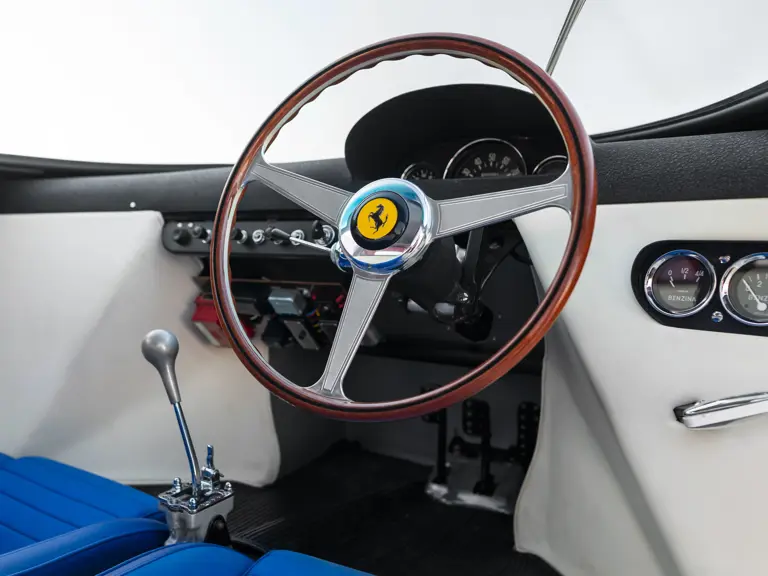
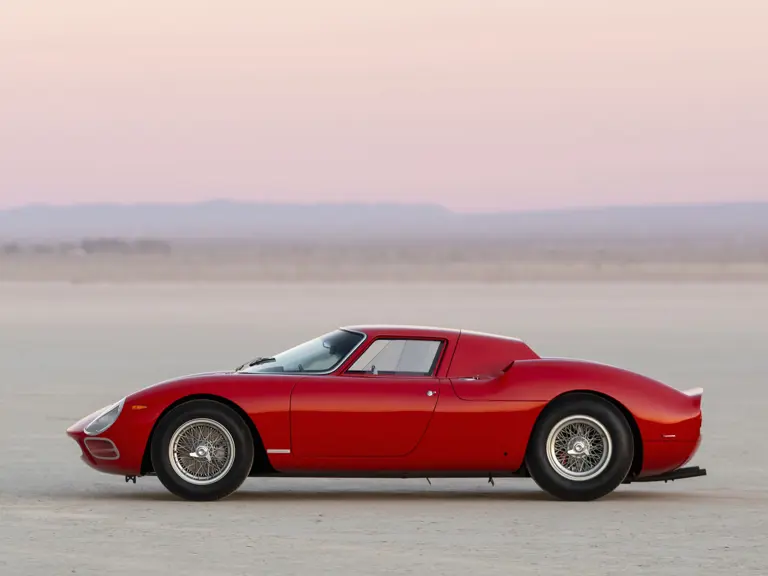



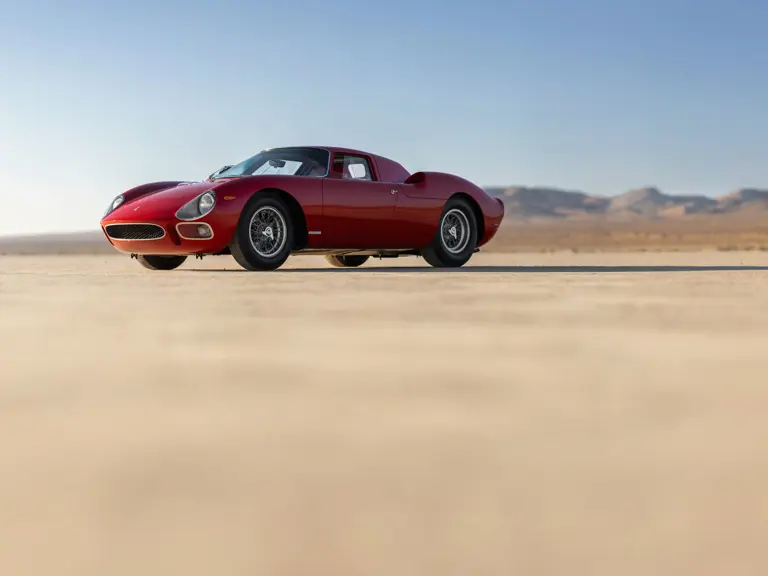


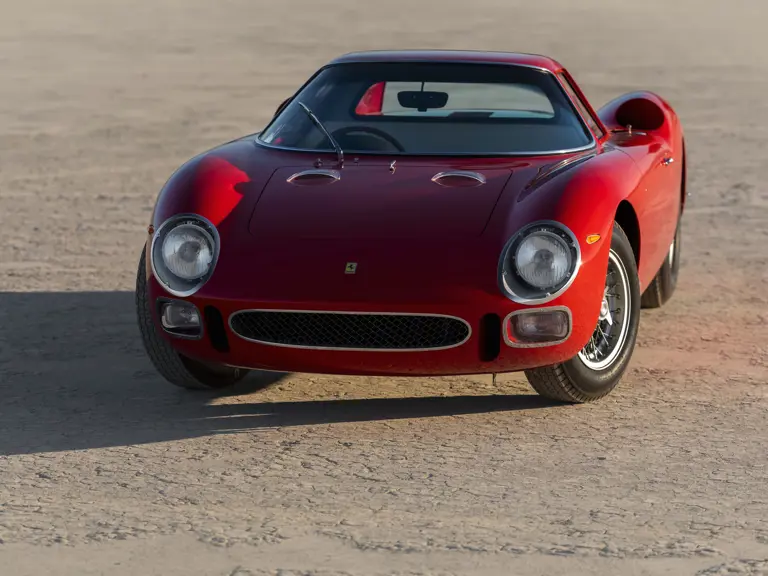
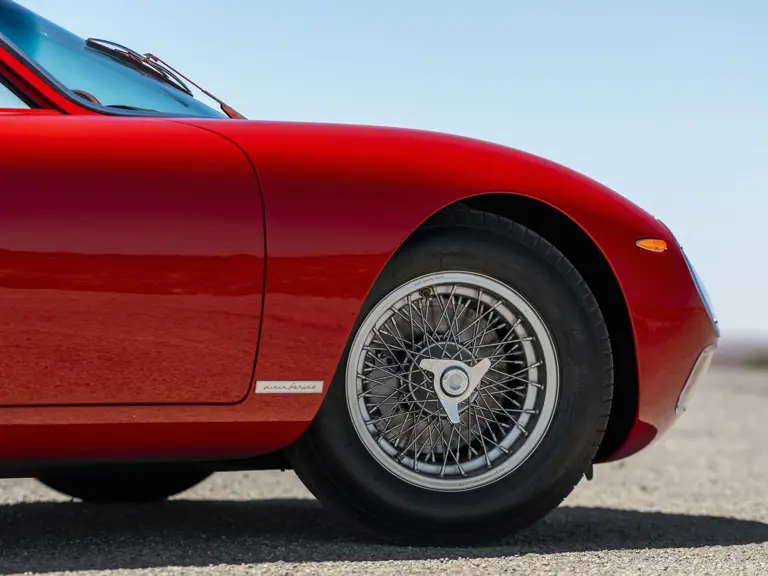












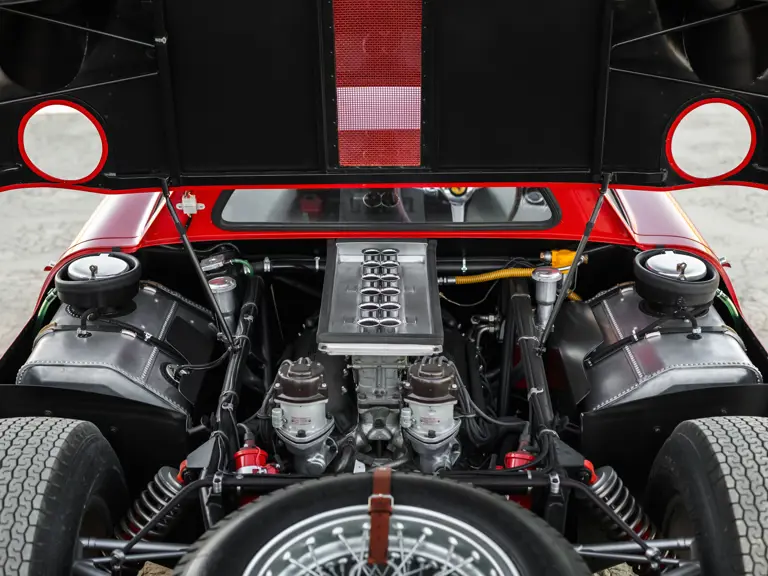
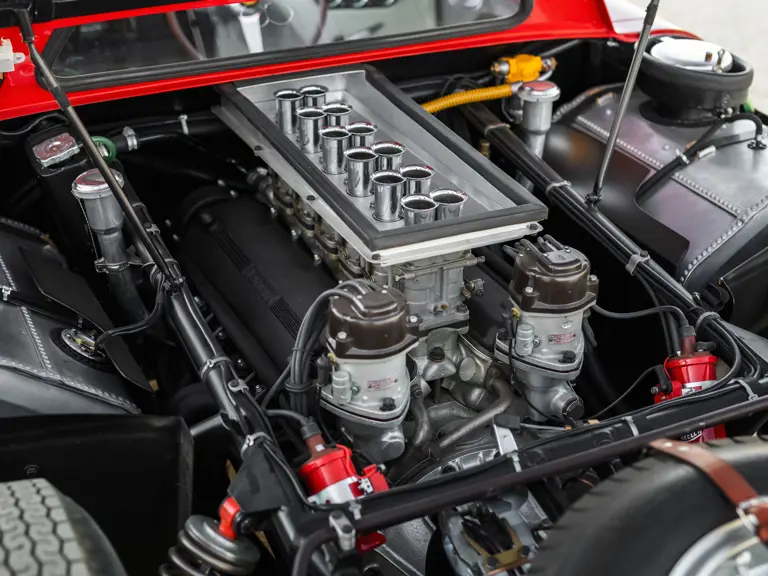







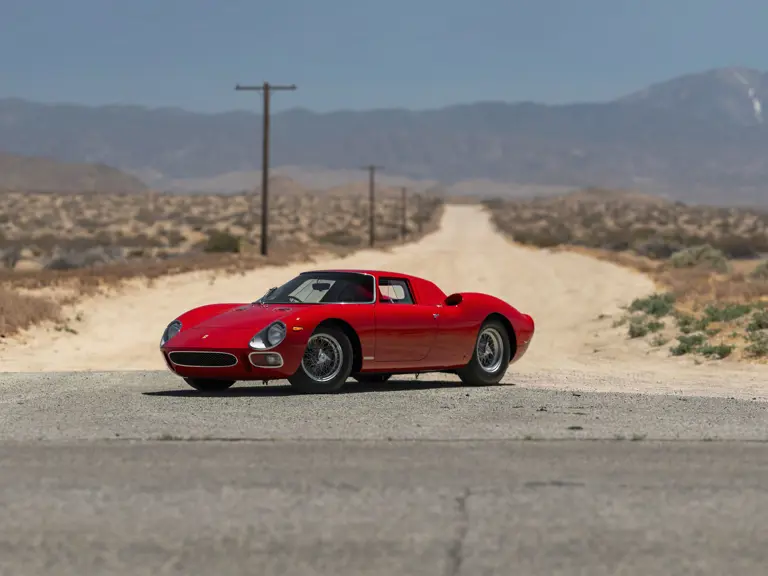

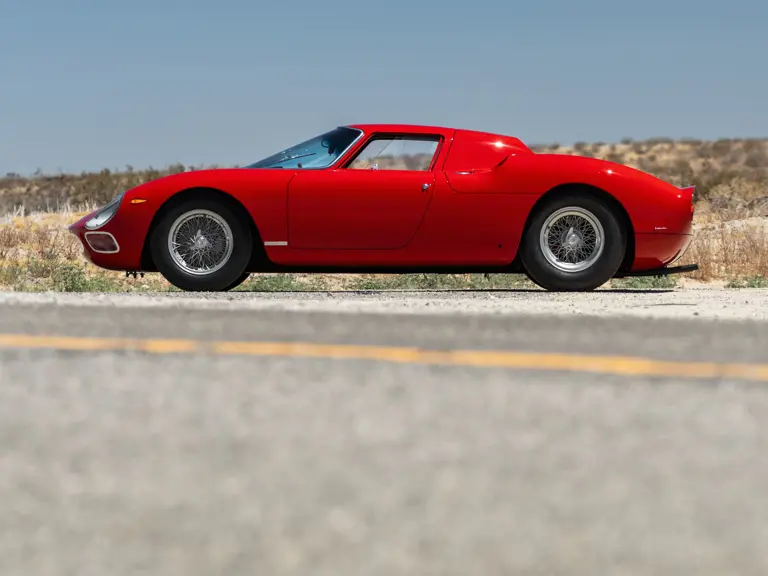



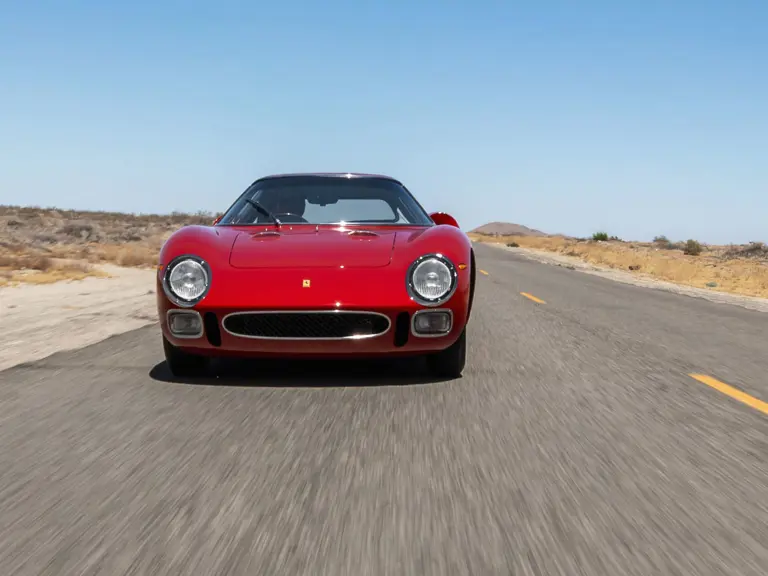


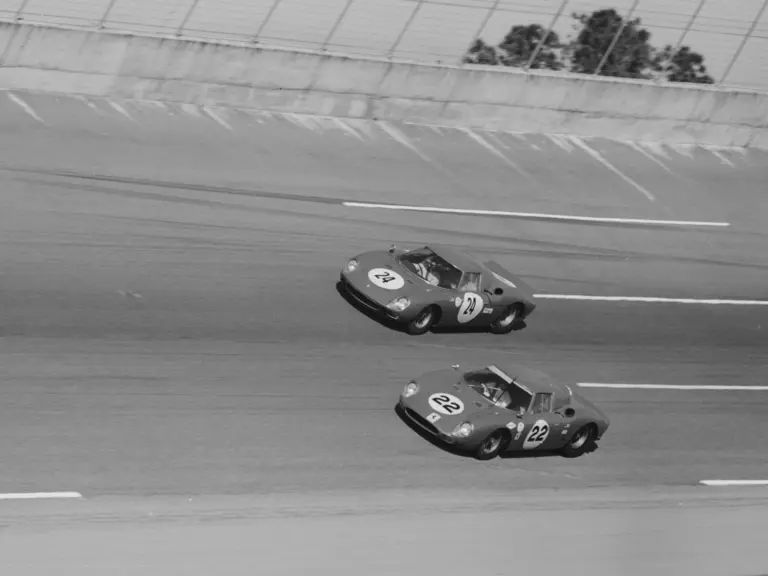


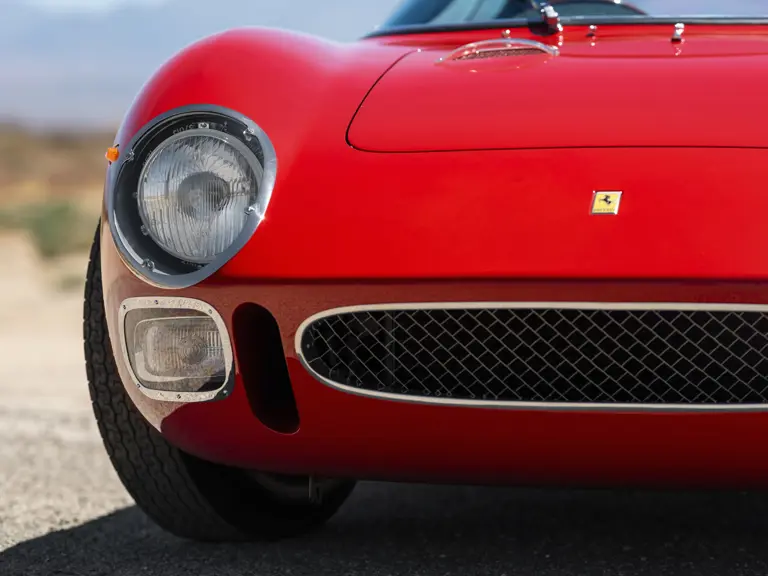
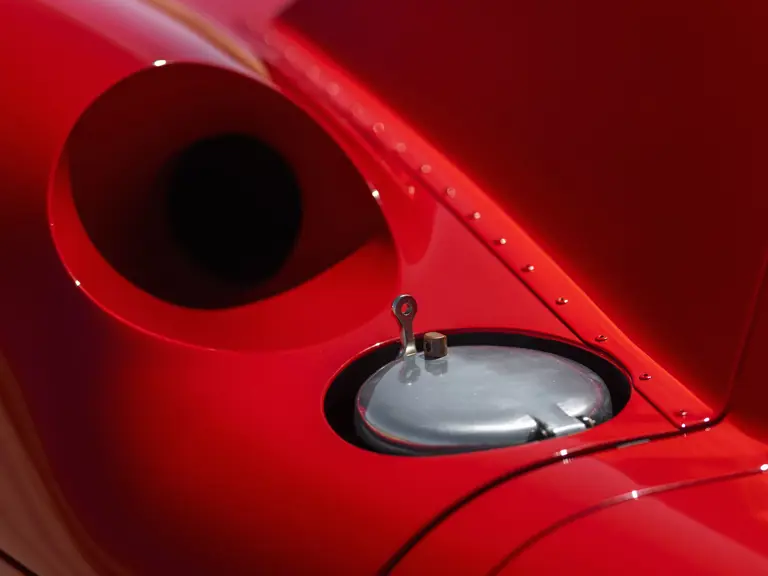
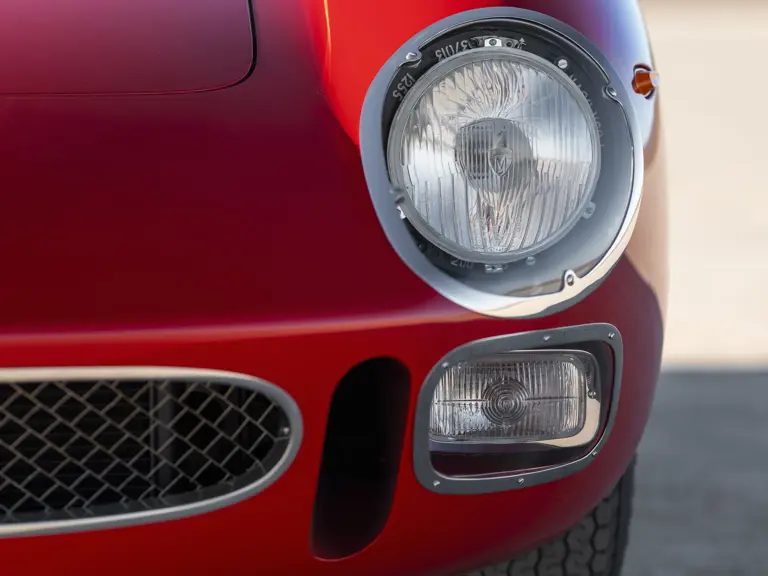
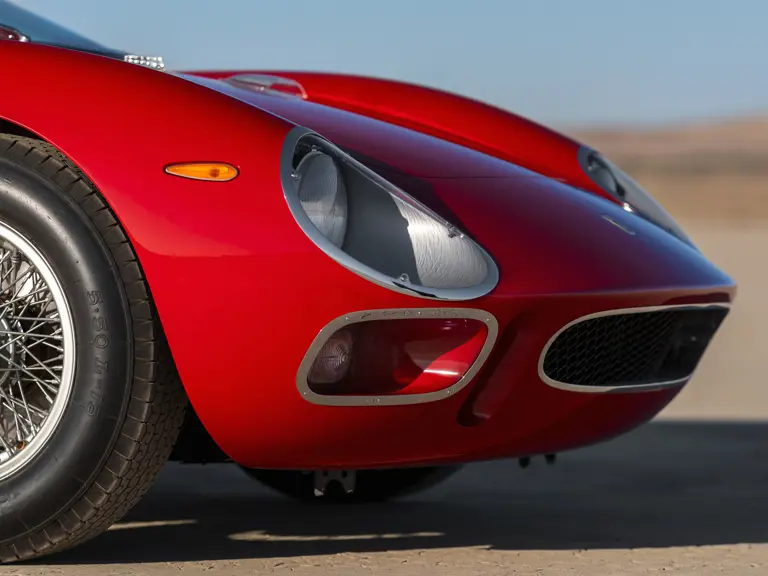


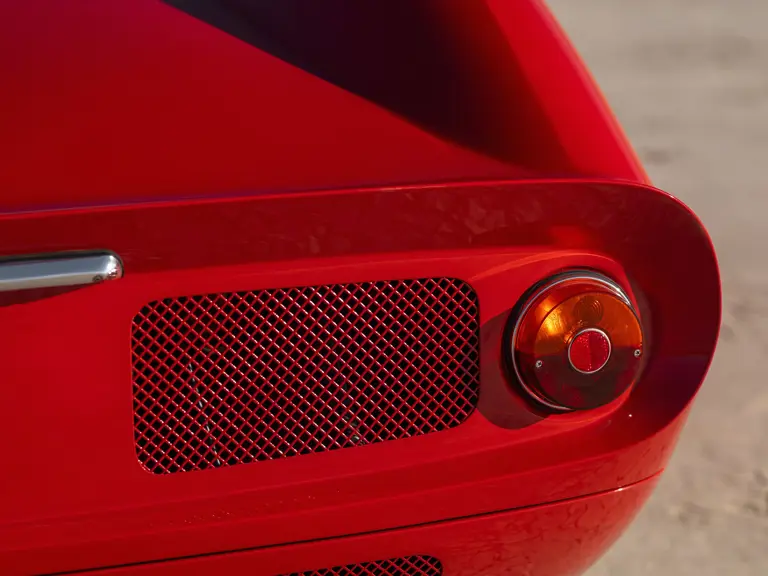

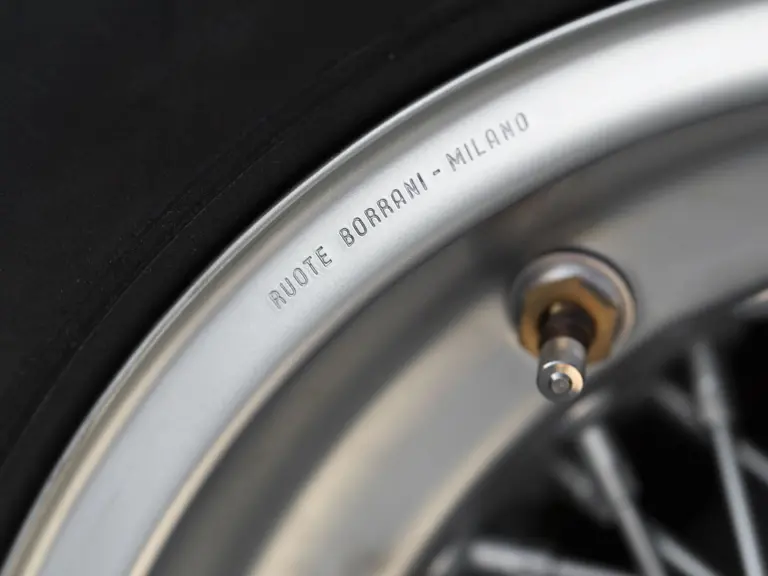


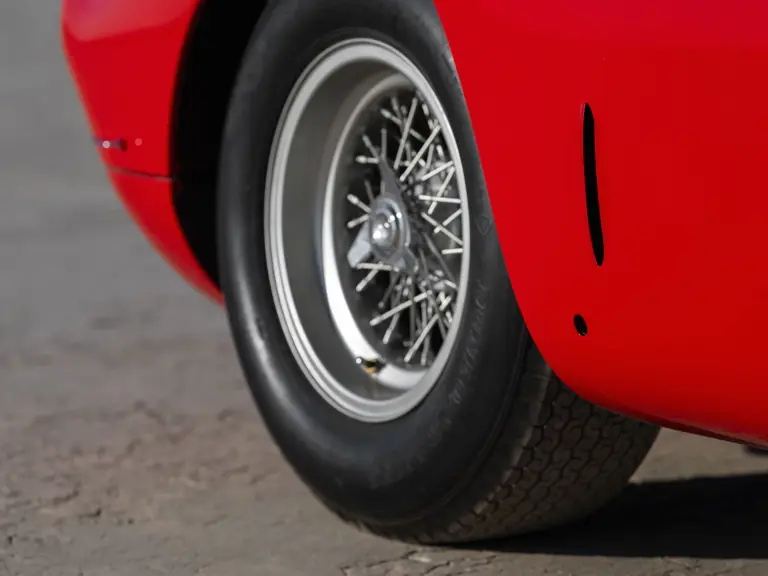



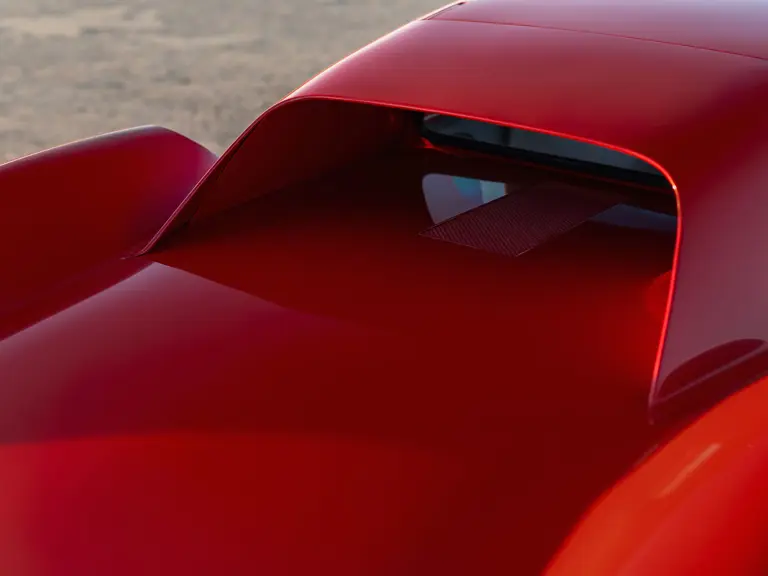
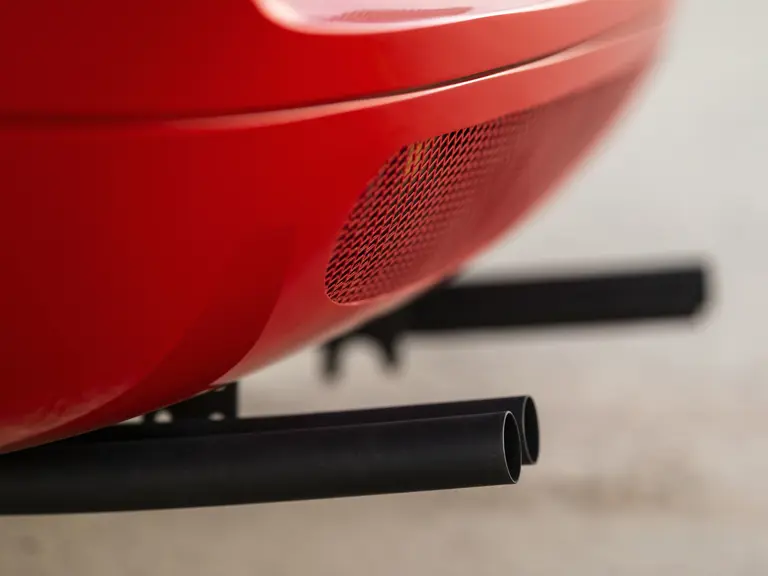

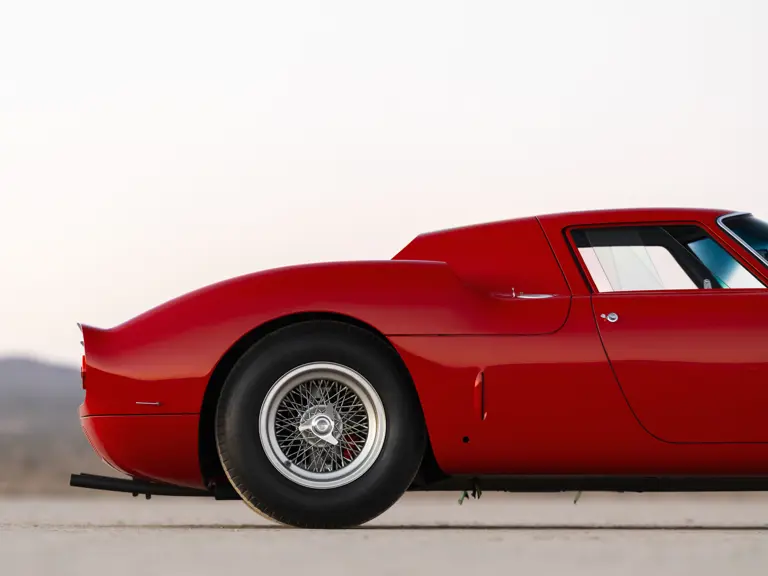


 | Monterey, California
| Monterey, California


